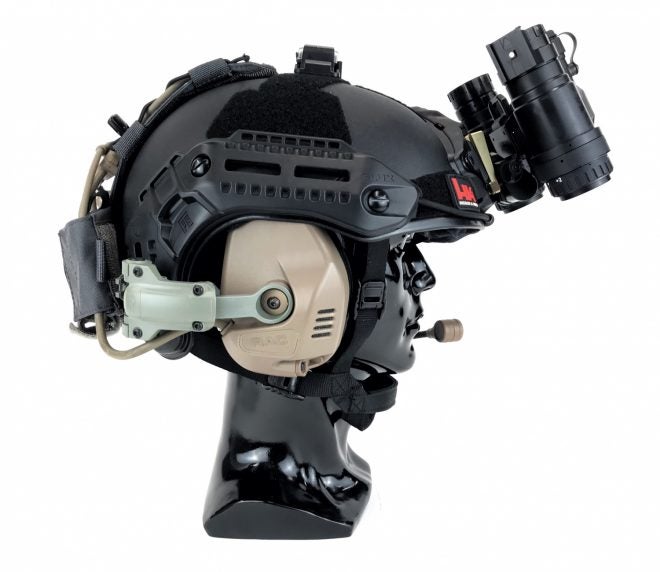Helmets are the standard for holding night vision goggles on your head. There are a number of manufacturers that make them. OPS-Core and Team Wendy are some of the more popular ones. For shooters on a budget, they often go with a simple bump helmet. They do not offer any ballistic protection and are sort of glorified bicycle helmets. But that’s really all you need to hold night vision on your head. MTEK USA has a ballistic and carbon versions of their FLUX helmet. However, a FLUX Bump does not exist . . . until now, thanks to PTS Syndicate.
PTS Syndicate MTEK FLUX BUMP
Last week I teased some pictures of the MTEK FLUX replica helmet in my article about AMP arm modifications. For those not familiar with PTS Syndicate, they are an airsoft company. They make licensed replicas for the airsoft market. They licensed the FLUX from MTEK USA and this replica is really good.
Why the MTEK FLUX helmet? First of all MTEK USA only makes ballistic and carbon FLUX helmets. They do not make a bump version. Secondly, the MTEK FLUX design is not just an aesthetic difference it is functionally different.
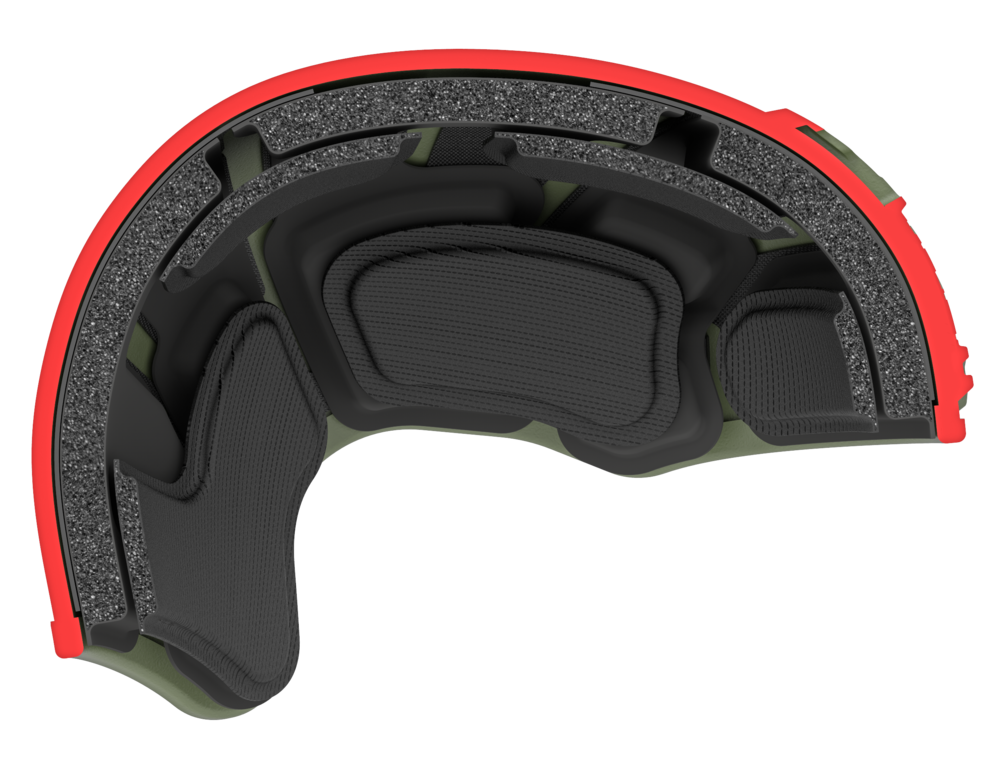
From MTEK USA:
The first thing you notice when putting on the FLUX is how it wraps around your head. One might argue that the outer shell geometry is one of the most significant factors in a helmet’s design. That is because all other features must follow, in some form or another, this main “reference body”. The FLUX helmet is specifically designed to follow the natural shape of your head, so it results in increased comfort and stability, even when you wind up wearing it for hours on end or with multiple accessories attached. This goes a long way to actively reduce mental and physical fatigue, especially when you don’t have time for either. Hundreds of variations and revisions went in to the FLUX shell design, because to make a better helmet, it all starts with a better helmet shell.
The bottom of the FLUX shell extends further downwards and recurves into center. This lowers the rear mounting position of the retention system, and allows the suspension system to further cradle your head. This significantly adds to the overall stability of the helmet, especially when wearing large NOD’s or other mounted accessories.
So a replica of this design while not made of the same materials would still exhibit the same benefits due to the shape of the shell.




I know what some of you are thinking. “You want to trust your expensive night vision on a toy helmet?” While in the past some other replica helmets were not great, it was the accessories that mattered. Not the helmet. Night vision needs a solid foundation to mount on to. That starts with the shroud. The part that is bolted to the helmet. In the case of the MTEK FLUX, they use a Wilcox shroud. PTS replicated that perfectly. It feels just like the real thing. I use Wilcox shrouds on all my helmets and even my Crye Nightcap. If you think a plastic replica helmet is suspect, think about skull crushers like the Crye Night Cap. It is a nylon hat with a carbon fiber reinforcement for the shroud. That is even less stable than a plastic helmet.

I swapped the shrouds and they are compatible.
When you pull the rails and shroud off you can see PTS replicated the FLUX design. The real MTEK FLUX helmet features a “bolt-less” design. Other helmets use bolts to attach rails, suspension systems, chinstraps and shrouds. MTEK claims that this creates a weakness in the shell and can cause secondary fragmentation.
There are no drilled holes or inserts through the FLUX helmet to weaken the underlying ballistic material. Polymer fasteners replace all the heavy bolts, screws and other steel mounting hardware. Fastener strikes and secondary spalling are no longer an issue. Lightweight retaining structures are bonded directly to the outer shell to allow for accessory rail and shroud removal. The end result is a safer, lighter-weight helmet.

Photo by MTEK USA
Since the PTS FLUX bump is just a night vision hat it does not need to boltless design but they replicated it anyway. The retaining structures are not molded to the plastic shell and are screwed into the shell. Aside from that small difference, the rest of the helmet is virtually the same as the real FLUX.


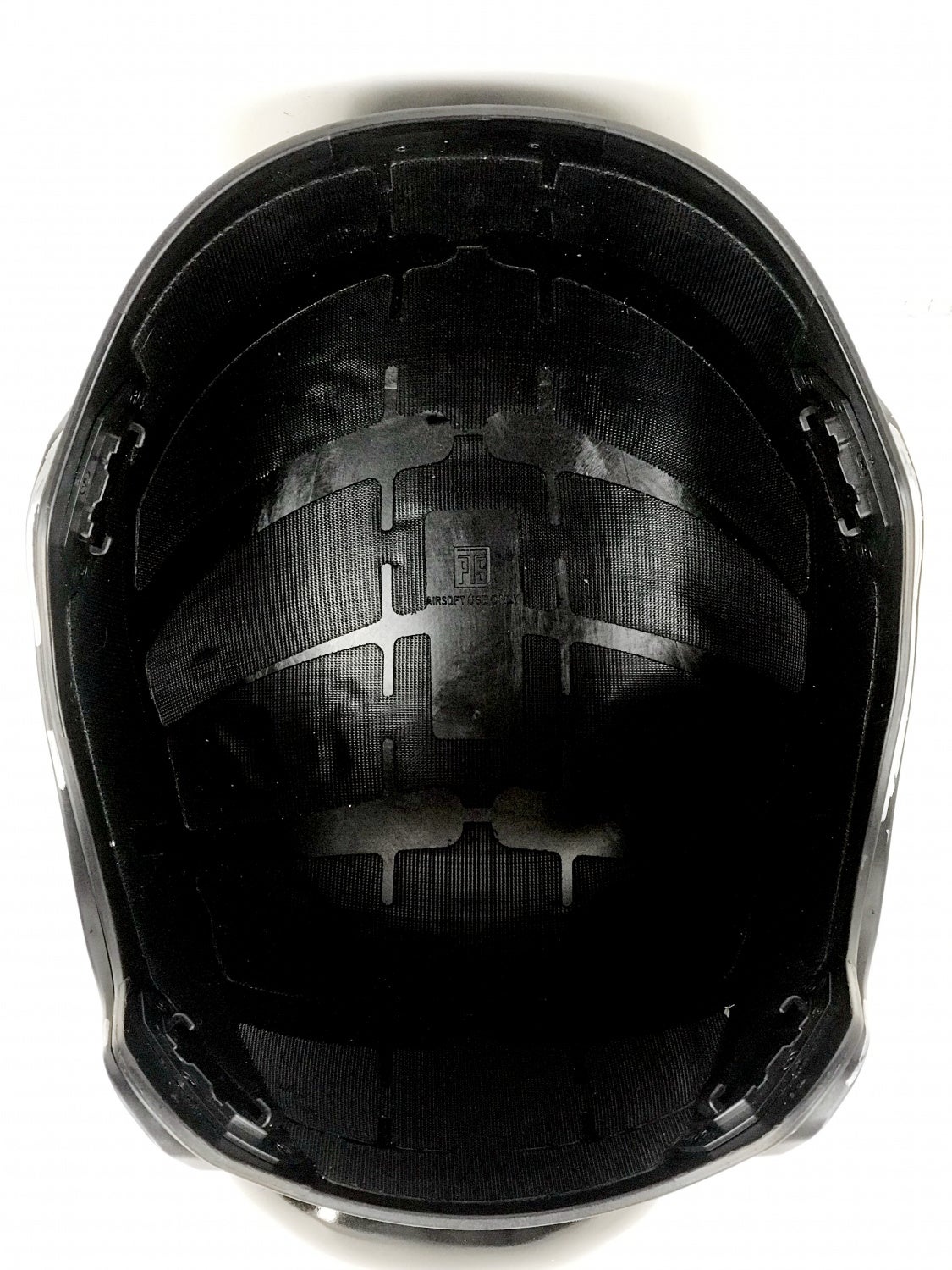
It is a little difficult to see the black hook velcro inside the black helmet but the velcro pattern is identical to the real MTEK FLUX ballistic helmet below.
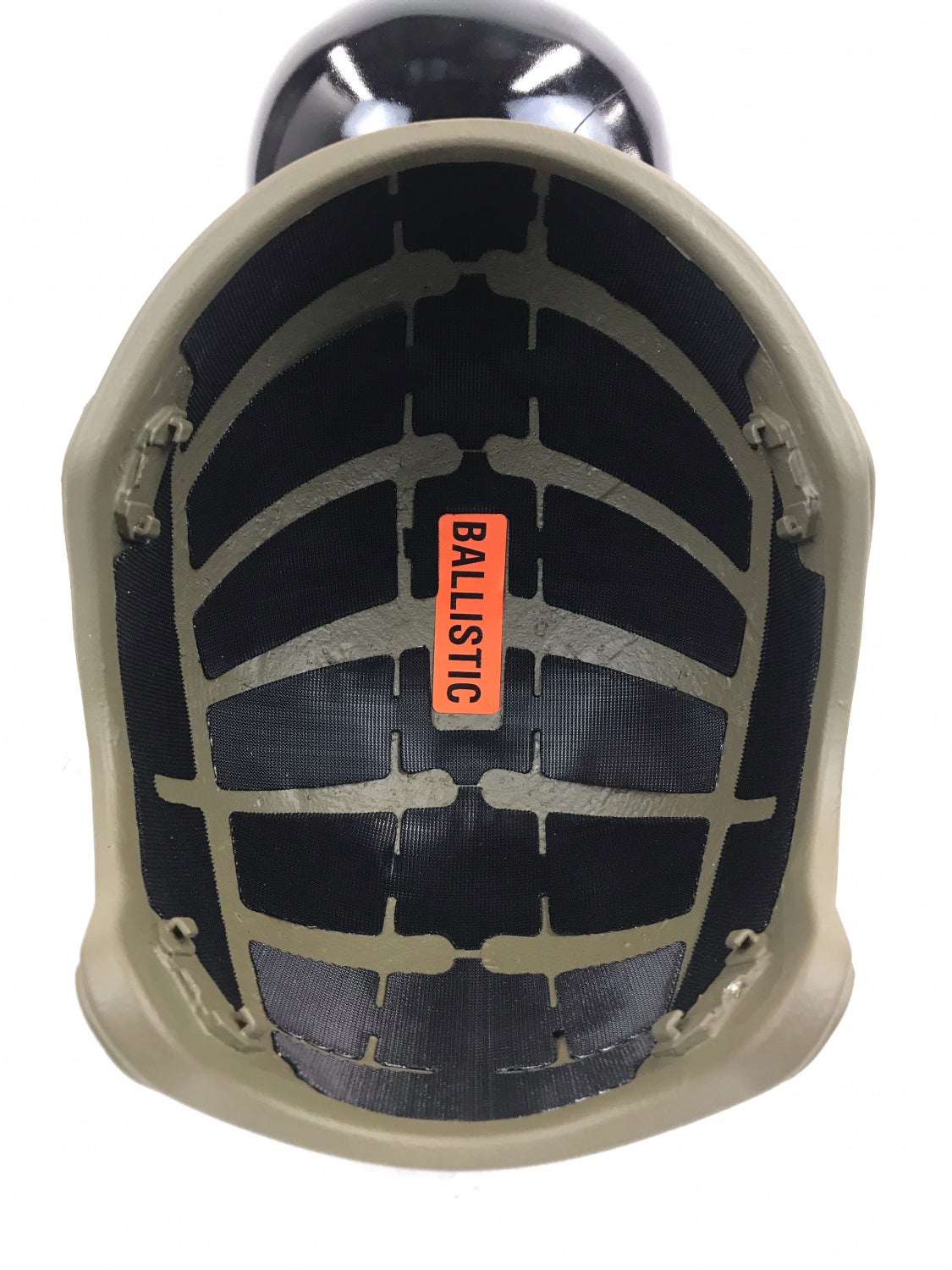

The MTEK FLUX ballistic is one of the lightest ballistic rated helmets on the market. It is NIJ IIIA rated. It can stop .44 magnum and weighs only 1lbs 10oz. A little bit off their reported 1.1lbs weight on their website. This could be due to the paint, velcro and retaining structures on the real helmet.
The PTS FLUX bump only weighs 1lbs 5 oz. That is the shell with the bolted retaining structures. Not the weight with the rails, shroud, harness or pads.
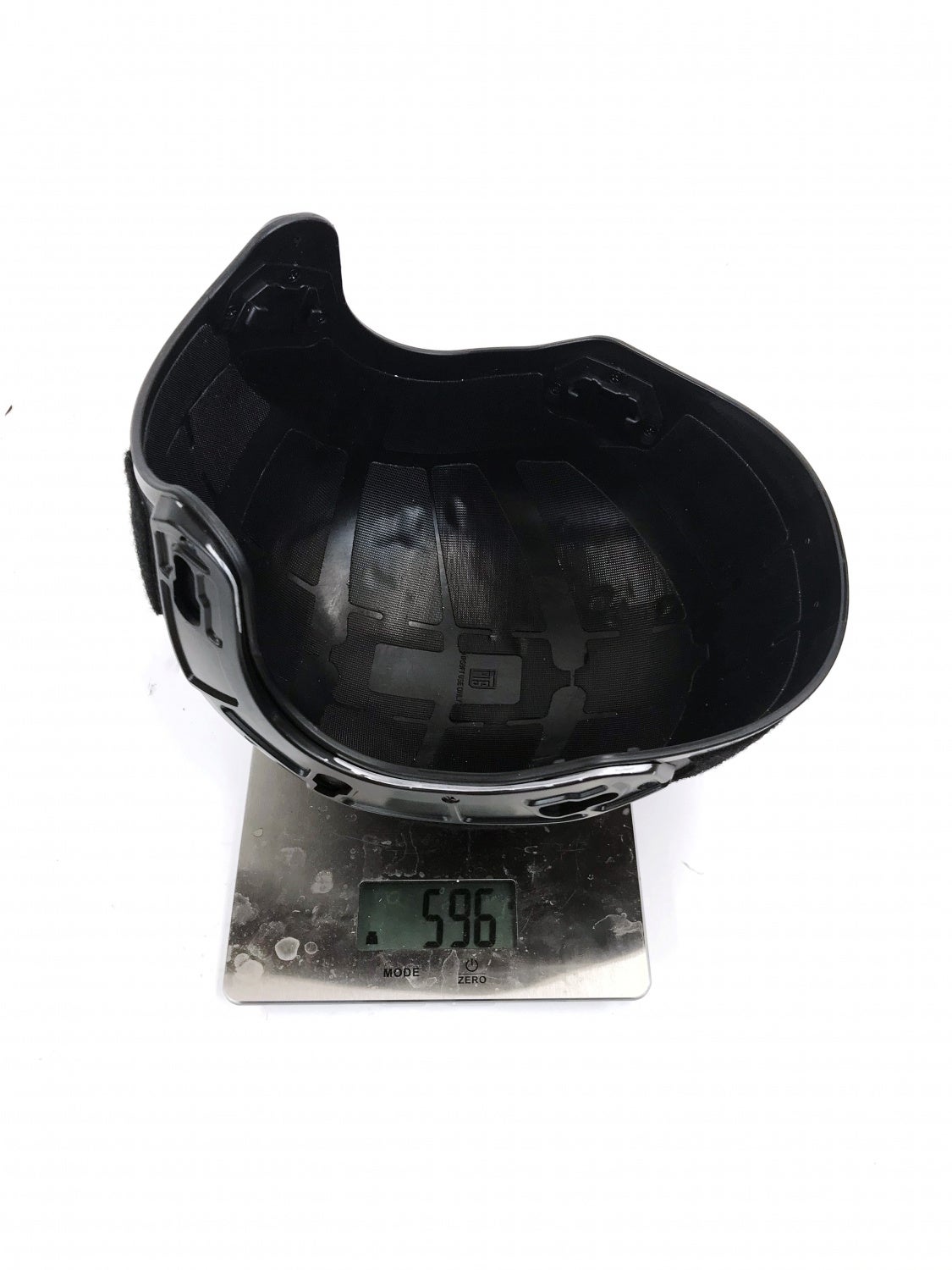
596 grams is 1lbs 5 oz.

The real FLUX is 1lbs 10.4 oz.
FLUX Differences
Aside from making manufacturing easier by bolting the retaining structures to the plastic shell, there are some other small differences with the real FLUX and PTS FLUX BUMP.
The real FLUX uses plastic hardware to attach the side rails. They use an anti-rotation T-nut whereas PTS does not. The PTS helmet uses all-metal screws and buts. You can order the real hardware on MTEK’s website for only $25 if you really want to save an ounce or two.



MTEK on the left. PTS on the right.
Not that it matters but it is possible for the metal T-nut used for the PTS FLUX bump to spin. Since it slots into the retaining structure of the bump it cannot fall out even if it does spin. You can see in the photo below the PTS metal T-nut fits the real FLUX helmet.

The pads look very similar but the PTS FLUX bump pads are thicker. I actually prefer this because the real FLUX liner pads are too thin and my head is swimming in the helmet.

A subtle difference with the secondary liner pads from PTS, they have lightning cuts in the hook velcro. I do not think this is a weight savings aspect but more for improved ventilation through the pads?

MTEK on the left, PTS on the right.

Photo by MTEK USA
There is one difference between the PTS FLUX bump and the real FLUX and that is the chin strap. The Cam-Lock sliders used for adjusting the strap on the PTS version are not as good as the real FLUX strap. The problem is the Cam-Lock does not lock securely and pops open too easily. This PTS FLUX Bump is a pre-production sample so hopefully, they will fix this issue when they go to production.
Compatibility
The PTS FLUX bump helmet is really good. So good that the parts and accessories are interchangeable. I was able to install all the real FLUX rails, shroud and harness to the PTS FLUX bump and vice versa.

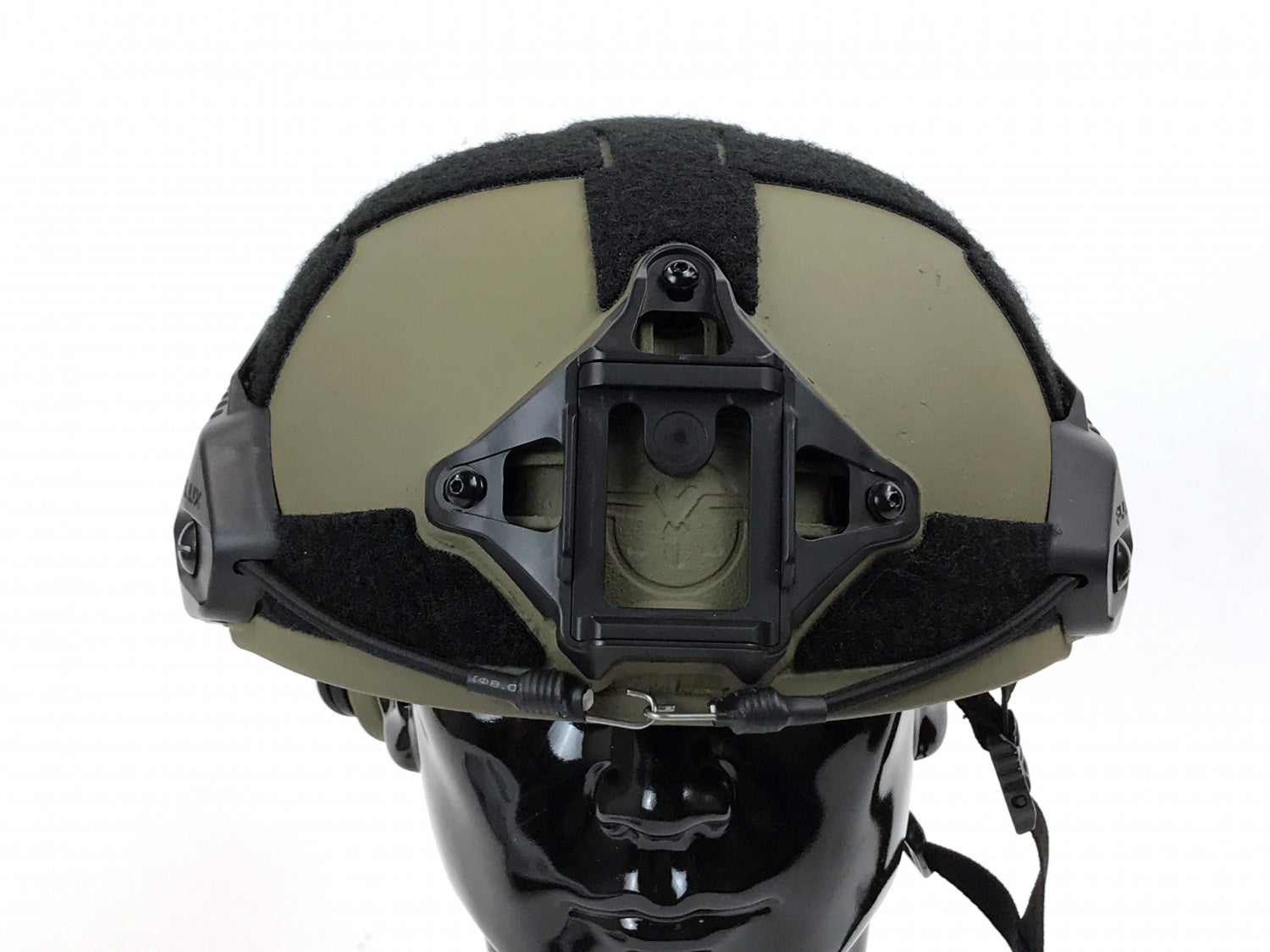
PTS replica shroud on the real MTEK FLUX ballistic helmet.
The side rails are identical other than the molded PTS logo.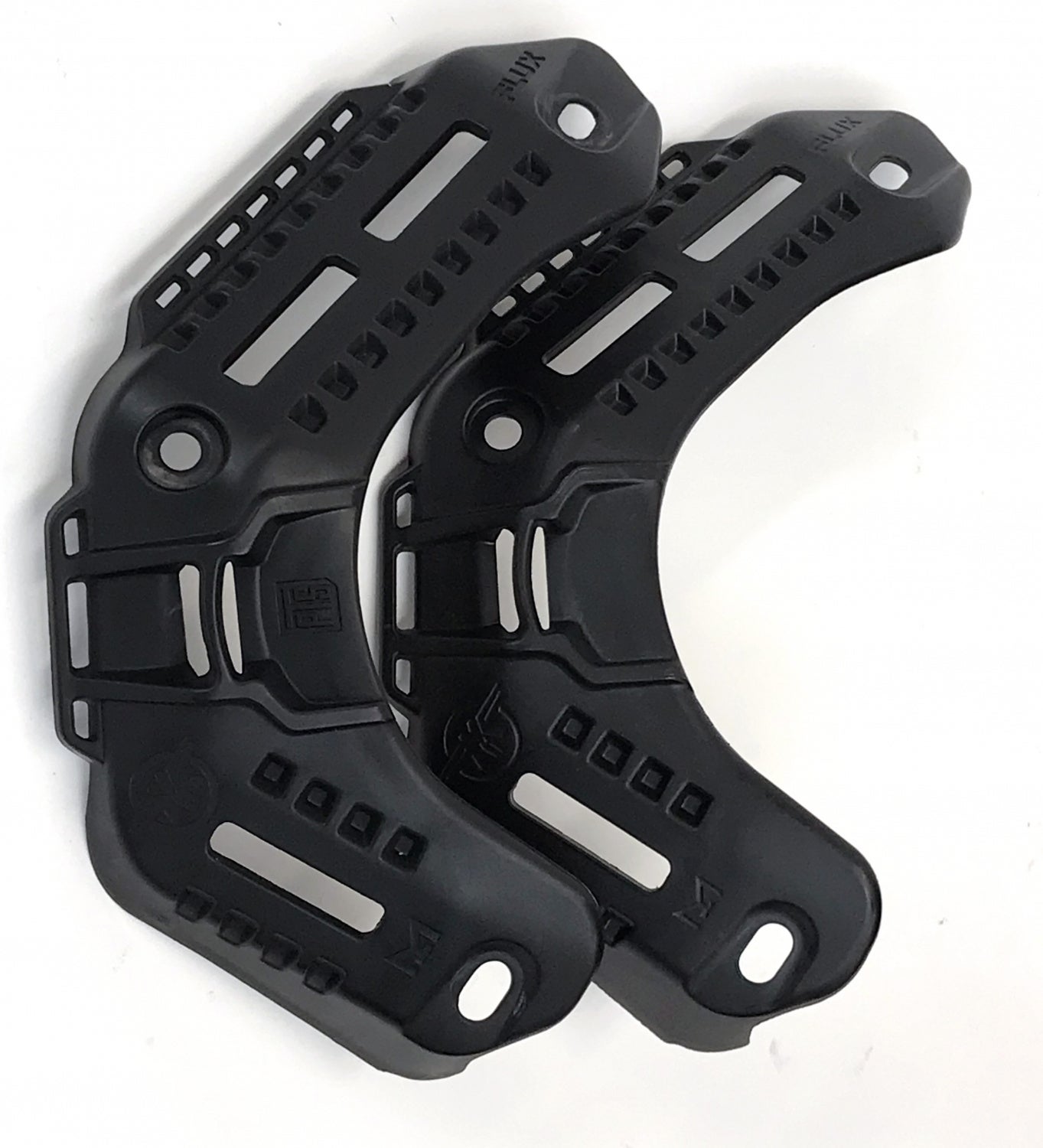

Final Thoughts
I was curious to see if the proprietary geometry actually made a difference. I wore the PTS FLUX bump helmet for about 6 hours straight and did not experience the typical forehead aches I get with the OPS-CORE helmet design. However I am not sure if the difference is truly due to the geometry of the helmet or the liner pads.

The FLUX liner pad design is simple. There are no Styrofoam pads like on the OPS-CORE helmet design. This could be the difference in comfort.
Price wise I was told that the PTS FLUX bump will be around $125. This is more than the unlicensed OPS-CORE replica helmets but this is a better helmet than those other helmets. If PTS fixes their Cam-Lock sliders then it will be the best night vision hat on the market. I don’t want to call it a bump helmet just because it is not rated or tested for impact like some of the real bump helmets out there. I am ok with this because I am not doing physical activities that would cause me to hit my head against anything hard. If you need a bump rated helmet then you might have to get something else.
We should see this and more next week at SHOT SHOW 2020.
 Your Privacy Choices
Your Privacy Choices
